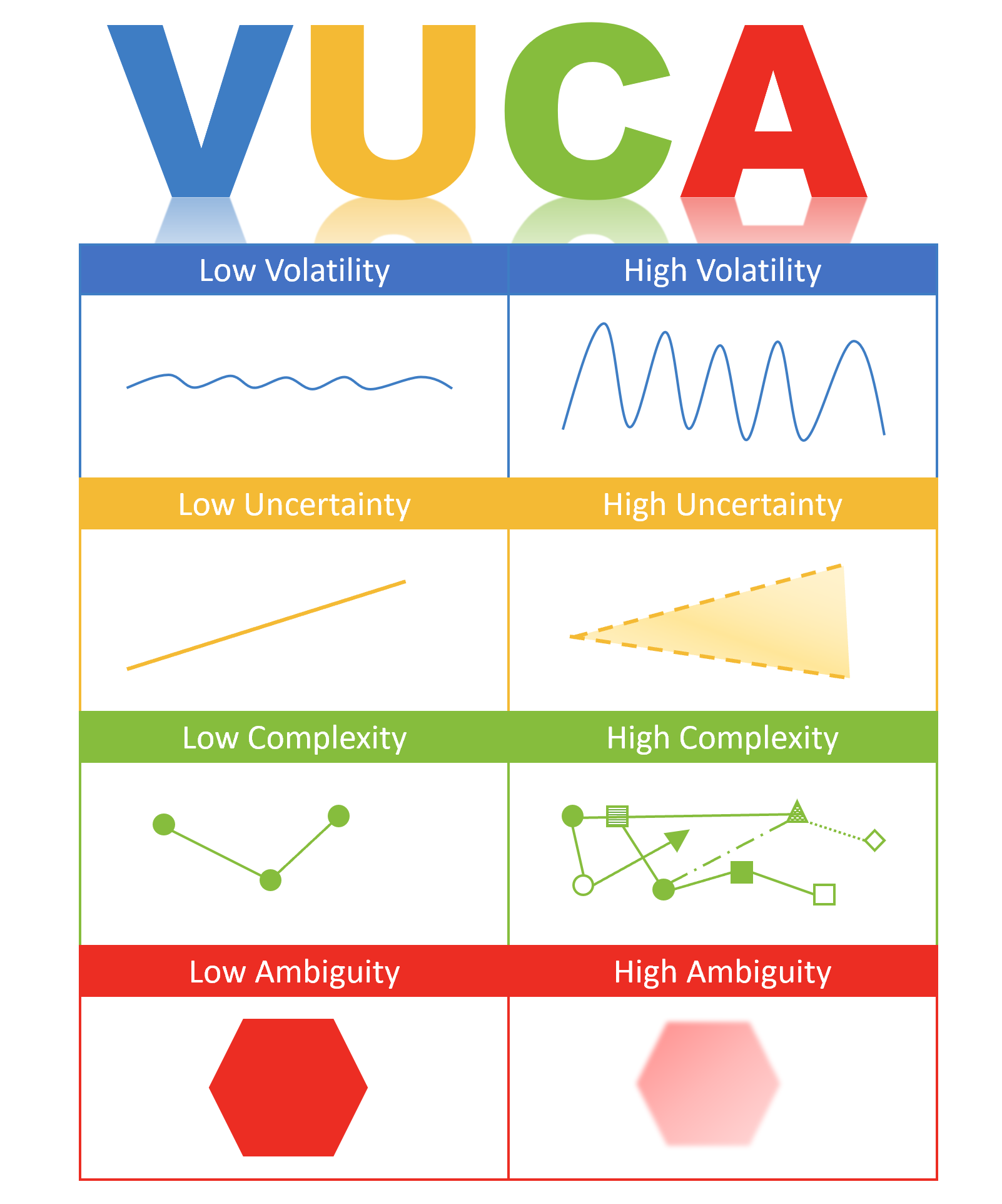VUCA
VUCA is an acronym that stands for volatility, uncertainty, complexity and ambiguity, a combination of qualities that, taken together, characterize the nature of some difficult conditions and situations.
VUCA is an acronym that stands for Volatility, Uncertainty, Complexity, and Ambiguity. It is used to describe the challenging and unpredictable business environment that organizations face today.
A VUCA environment is characterized by rapid change, unpredictability, ambiguity, and complexity. This can make it difficult for organizations to plan and make decisions.
Organizations can adapt to a VUCA environment by adopting agile and flexible strategies, fostering innovation and creativity, building resilience and adaptability, and investing in technology and data-driven decision making.
Examples of VUCA challenges include rapid technological change, global economic instability, political instability, climate change, and changing customer expectations.
Leaders can navigate a VUCA environment by being adaptable and flexible, developing a growth mindset, fostering innovation and creativity, building strong relationships with stakeholders, and being proactive in managing risks and uncertainty.
Strategies for managing VUCA risks include developing contingency plans, building resilience and redundancy into processes and systems, investing in data analytics and risk management tools, and fostering a culture of risk awareness and management.
Organizations can build resilience in a VUCA environment by investing in employee training and development, building strong relationships with customers and suppliers, developing contingency plans, and fostering a culture of agility, innovation, and continuous improvement.
- Snippet from Wikipedia: VUCA
VUCA is an acronym based on the leadership theories of Warren Bennis and Burt Nanus, to describe or to reflect on the volatility, uncertainty, complexity and ambiguity of general conditions and situations. The U.S. Army War College introduced the concept of VUCA in 1987, to describe a more complex multilateral world perceived as resulting from the end of the Cold War. More frequent use and discussion of the term began from 2002. It has subsequently spread to strategic leadership in organizations, from for-profit corporations to education.
Source: YouTube

